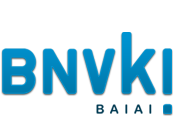The Foundation for Knowledge Based Systems (SKBS) continued their policy of awarding the SKBS prize to the best demonstration of the Demo-session of the BNAIC 2014.
The 2014 referee committee consisted of Jaap van den Herik (chair), Simon Colton, Tom Heskes, Virginia Dignum, Patrick de Causemaecker, and Josca Snippe.
The referee committee had to consider five submissions which were eligible for the SKBS prize. In Table 1 we list them by topic (in the order of their publication in the Conference Program BNAIC 2014).
| 1. Using Facial Expressions for Personalised Gaming. Paris Mavromoustakos Blom, Sander Bakkes, and Diederik Roijers.2. Teaching Mario. Demonstrating the Effectiveness of Human Guidance when q-Learning. Roland Meertens. 3. Enhancing Operational Work in Maritime Safety-and-Security Tasks. 4. An Implementation for Distances between Labellings in Abstract Argumentation.. 5. Interpreting EEG Signals using Artificial Intelligence. |
Table 1: The 2014 candidates of the SKBS prize.
Since 1999 we have seen many different appearances of the Demo-session. The common characteristic is the emphasis on being “an industrial exhibition”although we have seen some “academic exhibitions” too. Up to 2006 the prize money was provided by SKBS only. The Foundation for Knowledge Based Systems originates from the late 1980s as a foundation within SPIN (Stimulerings Projectteam In Nederland). The Foundation SNN (Stichting Neurale Netwerken) is another well-known member of the former SPIN. SNN supported SKBS financially with augmenting the SKBS prize in 2007. In 2008, the industrial partner Strukton announced its willingness to participate in the prize funding. The extra contribution was gratefully accepted. They continued this policy in 2009, 2010, and 2011. Then they stopped. Since 2011 SNN sponsors the BNAIC by Euro 500,- for the best paper Award.
In 2014, five submissions were exhibited in the demonstration room for the SKBS prize, next to posters and overview demos of this 26th BNAIC. All five SKBS demos were interesting, but in fact of different type. It was really a pleasure to walk along the different demos and to discuss them with the stand holders. The quality and maturity of presentation, particularly the quality of ideas, ranged from brilliant ideas (two demos) worth to be elaborated upon to full pledged applications (three demos) that will find their place in practice. Adding one more original idea to such an application would make it an immediate contender for the first place. All participants showed enormous enthusiasm for their demo and were willing to tell the whole story: from idea to product.
All in all, the referee committee had a difficult task. The procedure went in shifts: from five we reduced the number of candidates to three ( see above), then to two and finally to one.
The members of the referee committee were invited to score on (a) the AI content, (b) the originality of the submission, (c) scientific orientation, (d) the actual applicability in society and scalability, and (e) the visualisation.
There was a balanced discussion with well chosen arguments which finally led to the following winners: Enhancing Operational Work in Maritime Safety-and-Security Tasks.
Steffen Michels, Marina Velikova, Bas Huijbrechts, Peter Novak, Jesper Hoeksma, Roeland Scheepens, Jan Laarhuis, and André Bonhof.
In Table 2 we provide an overview of the winners of the SKBS prize so far.
Congratulations to the Nijmegen team for the organization of the 26th BNAIC and to the Radboud University team for winning the 2014 SKBS prize.
| 1999 Maastricht M. van Wezel, J. Sprenger, R. van Stee, and H. La Poutré Neural Vision 2.0 – Exploratory Data Analysis with Neural Networks |
| 2000 Kaatsheuvel (shared prize) E. Zopfi HKTG. Schram LubeSelect |
| 2001 Amsterdam Alexander Ypma, Rob Kleiman, Jan Valk, and Bob Duin MINISOM – A System for Machine Health Monitoring with Neural Networks |
| 2002 Leuven F. Brazier, D. Mobach, and B. Overeinder AgentScape Demonstration |
| 2003 Nijmegen Bert Kappen, Wim Wiegerinck, Ender Akay, Marcel Nijman, Jan Neijt, and André van Beek Promedas: A Diagnostic Decision Support System |
| 2004 Groningen Wouter Teepe The Secret Prover: Proving Possession of Arbitrary Files While not Giving Them Away |
| 2005 Brussels Gerald de Jong Fluidiom: The Evolution of Locomotion |
| 2006 Namur Marion Verduijn, Niels Peek, Peter Rosseel, Evert de Jonge, and Bas de Mol Procarsur: A System for Prognostic Reasoning in Cardiac Surgery |
| 2007 Utrecht Tim Harbers, Rob van der Veen, Marten den Uyl Sentient Demonstration BNAIC 07: Vicavision |
| 2008 Enschede (shared prize) Joris Maervoet, Patrick De Causmaecker, and Greet Vanden Berghe A Generic Rule Miner for Geographic DataDennis Reidsma and Anton Nijholt Temporal Interaction between an Artificial Orchestra Conductor and Human Musicians |
| 2009 Eindhoven Tom van Bergen, Maarten Brugmans, Bart Dohmen and Niels Molenaar Cobes: The clean, safe and hospitable metro |
| 2010 Luxembourg Willem Burgers, Wim Wiegerinck, and Bert Kappen Disaster Victim Identification System |
| 2011 Ghent Wim Vancroonenburg, Jannes Verstichel, Greet Vanden Berghe, and Wouter Souffriau Efficient aircraft loading: a mixed integer programming approach for the aircraft weight and balance problem |
| 2012 Maastricht Michel Klein, Nataliya Mogles, and Arlette van Wissen Demonstration of eMate – Stimulating Behaviour Change via Mobile Phone |
| 2013 Delft Sjriek Alers, Daniel Claes, Joscha Fossel, Daniel Hennes, and Karl Tuyls. Applied Robotics: Precision Placement in RoboCup@Work |
| 2014 Nijmegen Steffen Michels, Marina Velikova, Bas Huijbrechts, Peter Novak, Jesper Hoeksma, Roeland Scheepens, Jan Laarhuis, and André Bonhof. Enhancing Operational Work in Maritime Safety-and-Security Tasks. |
Table 2: Overview of SKBS prizes.
By Jaap van den Herik
Director of SKBS
